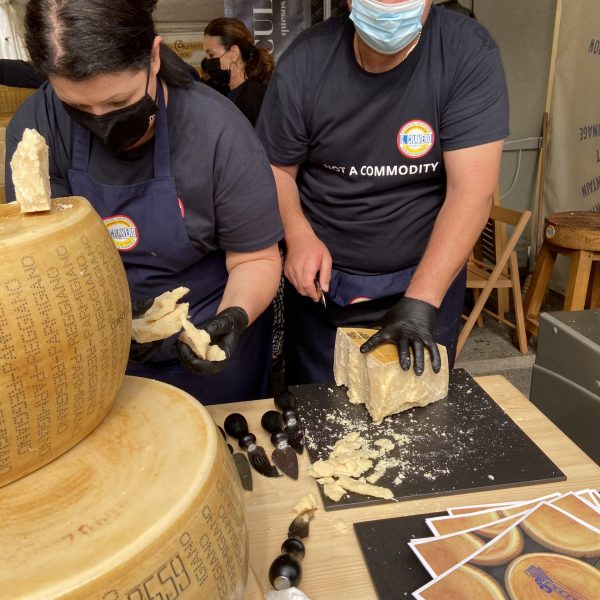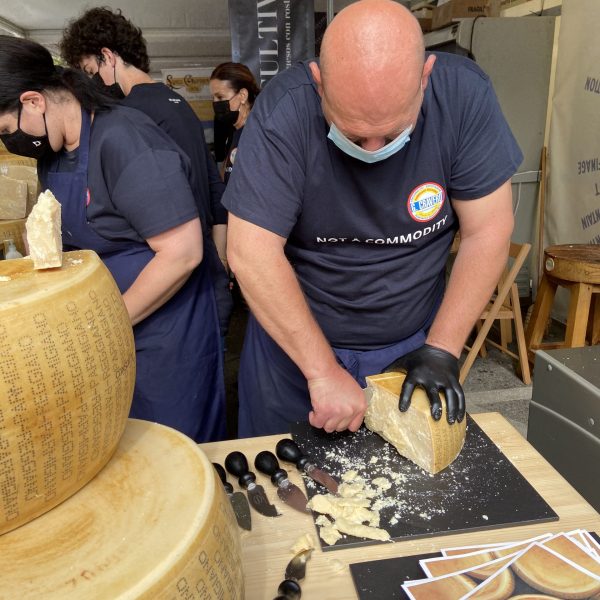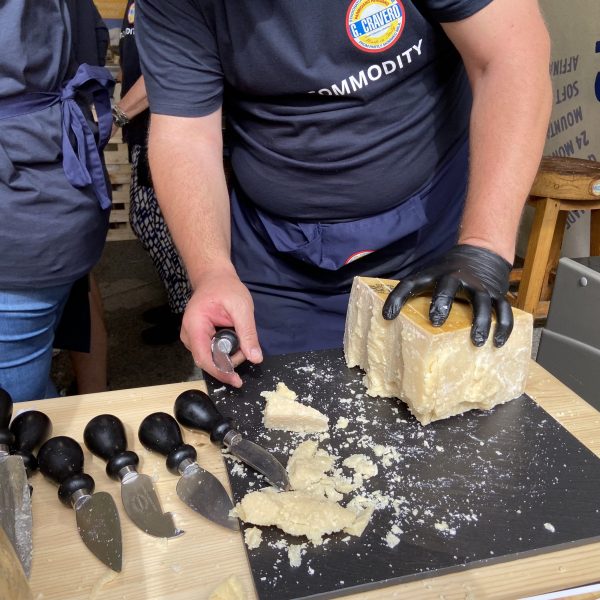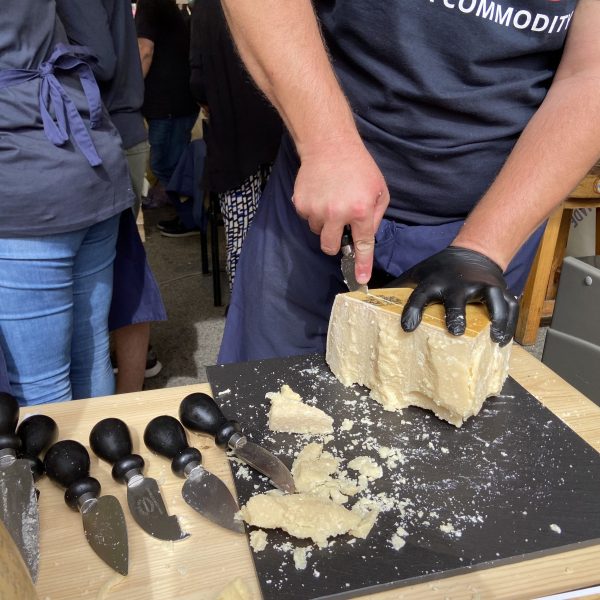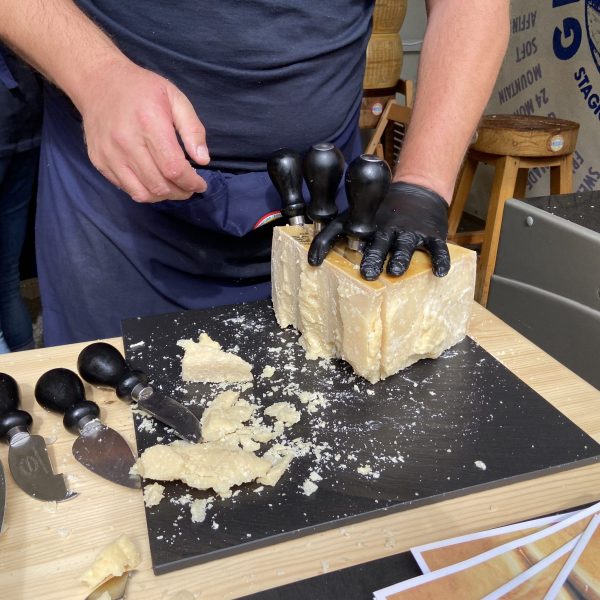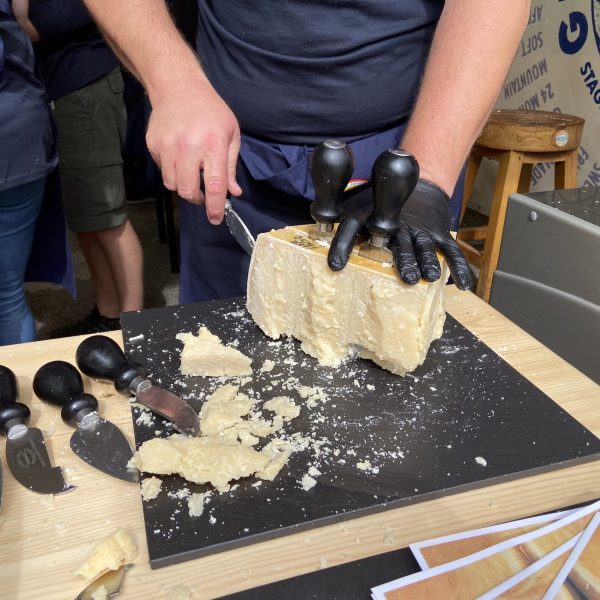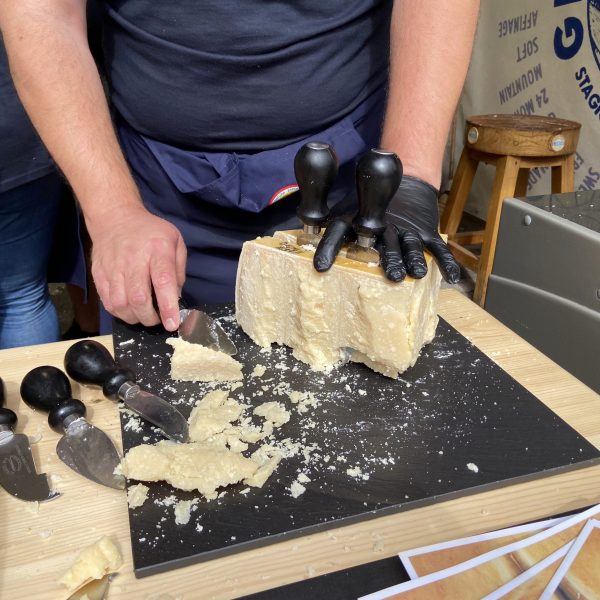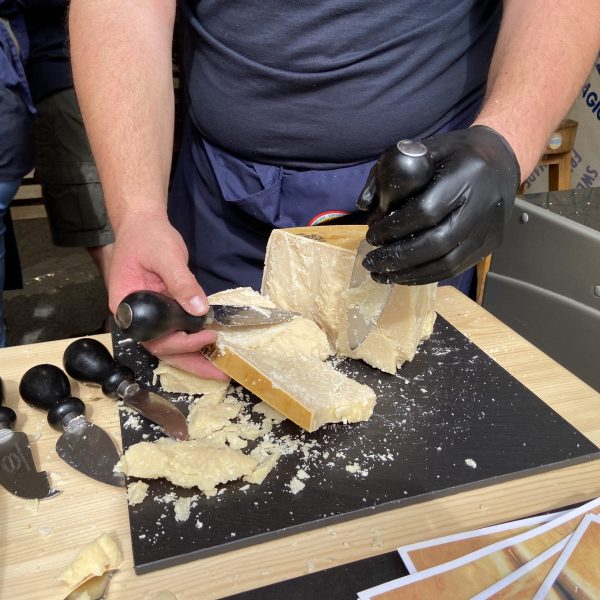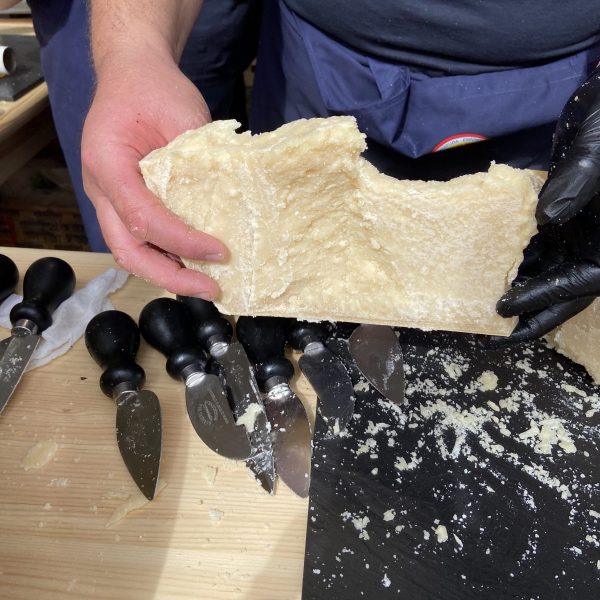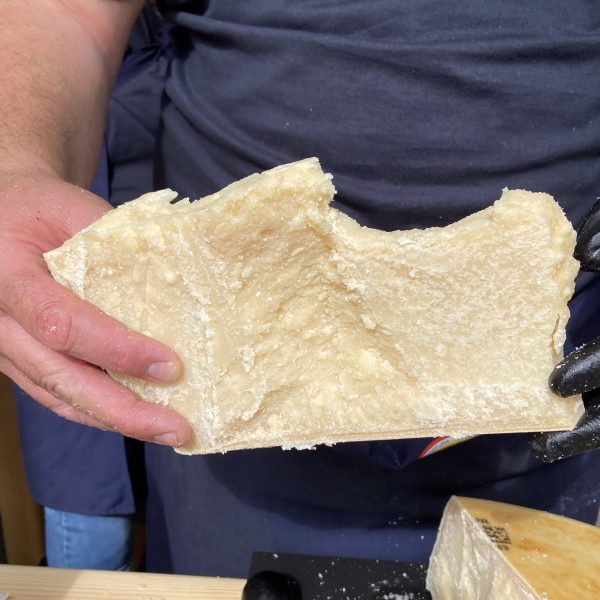This a monthly series which I have been publishing for quite some years. You can subscribe here, to get the latest cheese delivered directly on to your screen.
Parmesan, really, you might wondering feeling somewhat disappointed, what an old hat, can’t she come up with something more exciting? No, because this is exciting! Finally I was once again at a real, big cheese fair, the wonderful Slow Food Cheese in Bra in Piedmont (honestly, I’m not overdoing it – it truly was gorgeous, and on the way back my trolley case once again, finally, was stuffed with cheesy substances for upcoming tastings!). And the parmesan experience really was one of the most amazing ones during those days. But judge for yourself:
„The exact age of a cheese? That’s not that important.“ Giorgio Cravero, wiry, short grey hair and large black-rimmed glasses over dark eyes, wears a blue t-shirt with his company’s logo and the words Not A Commodity. Since the late 19th century his family deals in cheese, in Bra, and since almost as long they have been focussing on Parmesan. Or rather: Parmigiano Reggiano, this PDO protected, crumbly hard cheese from Emilia-Romagna (and the most southern part of Lombardy), the landscape between Apennines and the river Po, over 30 kilogram heavy, solid drum-shaped wheels. Documented since a thousand years (more or less), and for most of that time (more or less) traded over rather long distances. And mostly eaten grated, over pasta, instead of on its own terms.
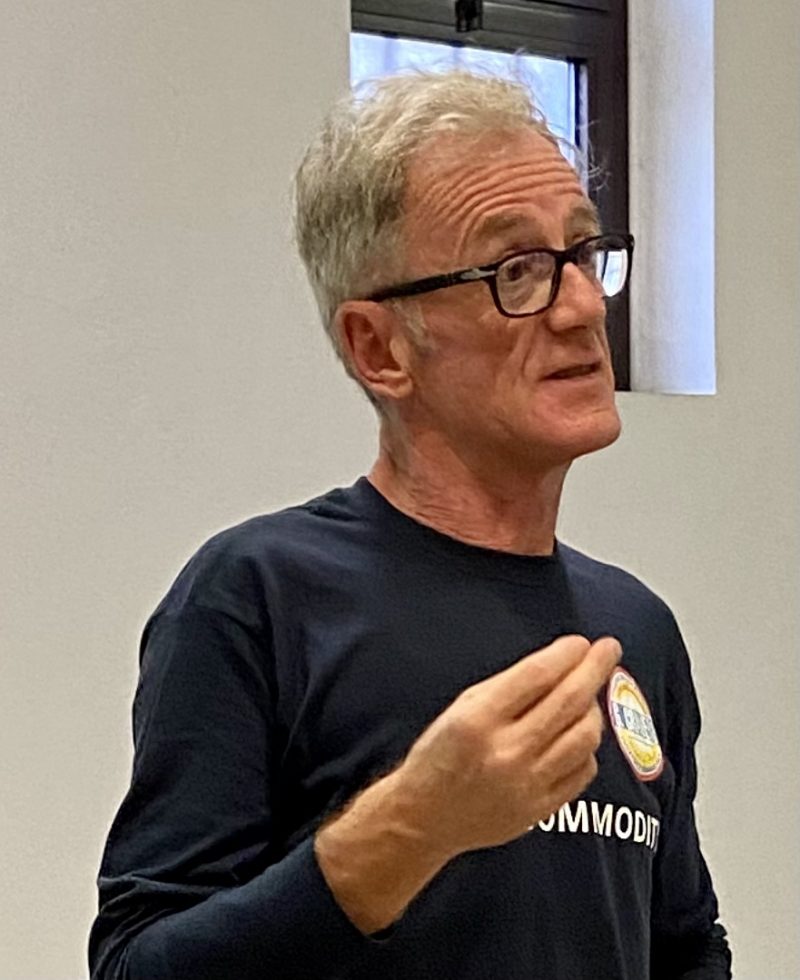
Giorgio Cravero certainly isn’t a masochist, business is good, and he does not waste any time complaining about the general lack of respect towards the cheese he is nurturing in his caves: „It’s the world’s best known cheese and we are doing well.“ But one thing is important to him: it must be creamy, the cheese he sends out under his name. „I’m not saying it’s the world’s best cheese, but this is how I like it! And that’s why I choose the producers I buy from according to this quality, at places where the soil enables them to make cheeses with that creaminess.“ Cravero is an affineur; he owns neither cows nor creamery, but instead goes round and selects year-old wheels, which he then matures in his caves in Bra for round-about another year. It is unusual that someone like him is not situated in Emilia-Romagna, and it is even more unusual (in these days) that the AC in the caves (which are typically above ground) only runs during three months, at the height of summer, to tame the temperature to 18°C, with a humidity of around 70%. In the larger cheese ripening context, these are warm and dry conditions.
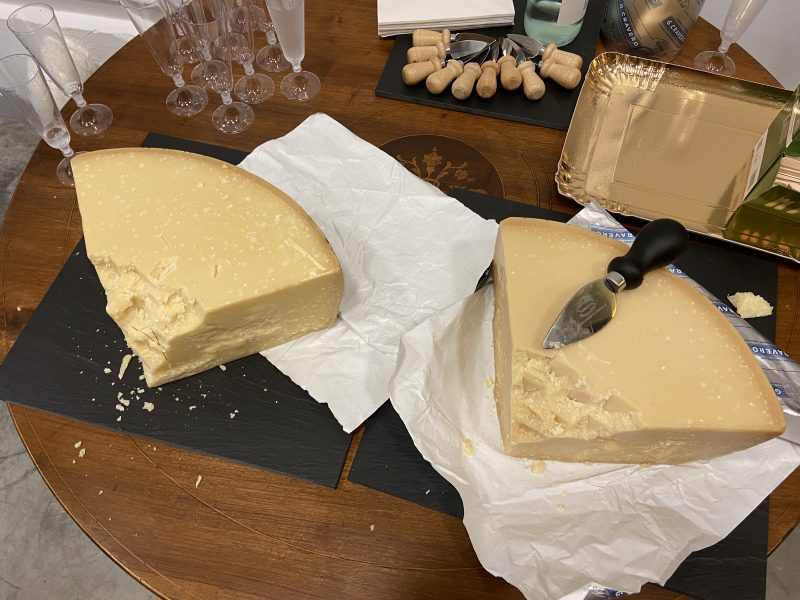
For my visit he had prepared two large wedges, each an eight of a wheel, of which one came from nearby Modena and the mountains, and the other from Reggio. And both were delicious, and creamy – and completely, shockingly, excitingly different. The first one tasted bright and fruity, the second dark and full of umami, like a thick meath broth. Both were Cravero’s.
I had never experienced these differences in style in such a striking way – and would like to encourage you, once again, to dedicate at least as much of tasting attentions to Parmigiano Reggiano as to all other cheeses. It will be your gain! And to break rather than cut it, which will enrich the experience even more. Have a look at these slides: Bio and his wife are Neal’s Yard Dairy folks, and were helping out at the Cravero stall in Bra, and for all four days did nothing else.
For all those in and around Berlin: Alte Milch at Markthalle Neun carries Cravero’s cheese from Modena.

